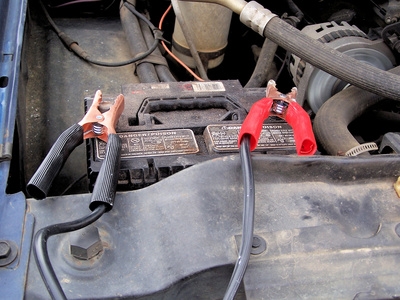
You went out to your car and the battery is dead, again. You just installed a new alternator on your engine, so what can be wrong? The alternator is an important piece of equipment in your car. It acts like a charger, recharging your battery as the electrical system uses the energy stored in the your battery. If a new alternator is still giving you trouble, it's time to go back to the basics and verify that the alternator was the initial problem.
Inspect the alternator mounting bolts. The bolts should be tight and the alternator should be fastened securely to the engine. The belt driving the pulley should be tight. Press the alternator belt with your thumb. The belt should give approximately 1/2 inch. If the belt moves more than a 1/2 inch, reposition the alternator and tighten the belt. Start the engine, the alternator and belt should turn in unison.
Inspect the battery and alternator connections. All connection should be tight and free of corrosion. Clean corrosion with baking soda and a small wire brush. Inspect the chassis ground connection. The chassis frame connection should be tight and free of rust, paint, oil, dirt and debris. Clean rust and paint from the frame with a scouring pad. Remove all oil, dirt and debris.
Inspect the engine harness. All electrical connections should be tight and free of corrosion, abrasion, oil, dirt and debris. Reconnect all loose connections. Temporarily repair exposed wires by wrapping black electrical tape around the exposed wires. Remove corrosion with baking soda and a wire brush.
Turn the key switch to "OFF" and measure the voltage across the battery terminals. If the engine has been sitting overnight, the voltage should be approximately 12.6 volts. If the engine has recently been run, the voltage may be higher than 12.6 volts. If the voltage is less than 10 volts, place the battery on a charger.
Inspect the fuses in the fuse box. Refer to your owners manual and verify that the fuses related to the alternator and charging circuit are not blown. Replace any fuses that are blown or damaged.
Turn the key switch switch to "START" and start the engine. Measure the voltage across the battery terminals. With the engine running at low idle, the voltage should be approximately 14.6 volts. If the voltage is less than 12.5 volts, replace the alternator. If the voltage is over 15 volts, the alternator is overcharging that battery. Replace the alternator.